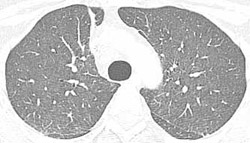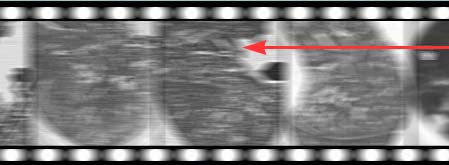 |
Stumped by an unfamiliar pattern? When confronted with this problem, radiologists have long compared the unknown case with examples found in textbooks until a representative match is found. For example, Borderlands of Normal and Early Pathological Findings in Skeletal Radiography is a "dog-eared" reference at each viewbox We know how to find information in books. We know how books are organized. We use the table of contents, chapters, index, and page numbers as means to the information within. However, applications designed for the Web have no intuitive organization. New navigational methods need to be devised. |
|
|
| The images are ordered in a visual hierarchy from white to black with the following pattern order:
Calcification > Consolidation > Ground glass > Mosaic perfusion > Nodules (random, centrilobular, peribronchial) > Septal (intralobular, interlobular) > Honeycombing > Cysts
Instructions for web application:
- The mouse controls the direction and speed of the filmstrip.
- At the center of the filmstrip, movement is slow and speeds up at the ends of the filmstrip.
- Clicking on any image brings up the diagnosis and differential diagnosis for that image.
- Diagnosis includes key facts, imaging findings, clinical and pathologic features.
- Click on the HRCT Picker to return to this introductory page.
- Click on the HRCT Expert system for an alternative system.
|
|

